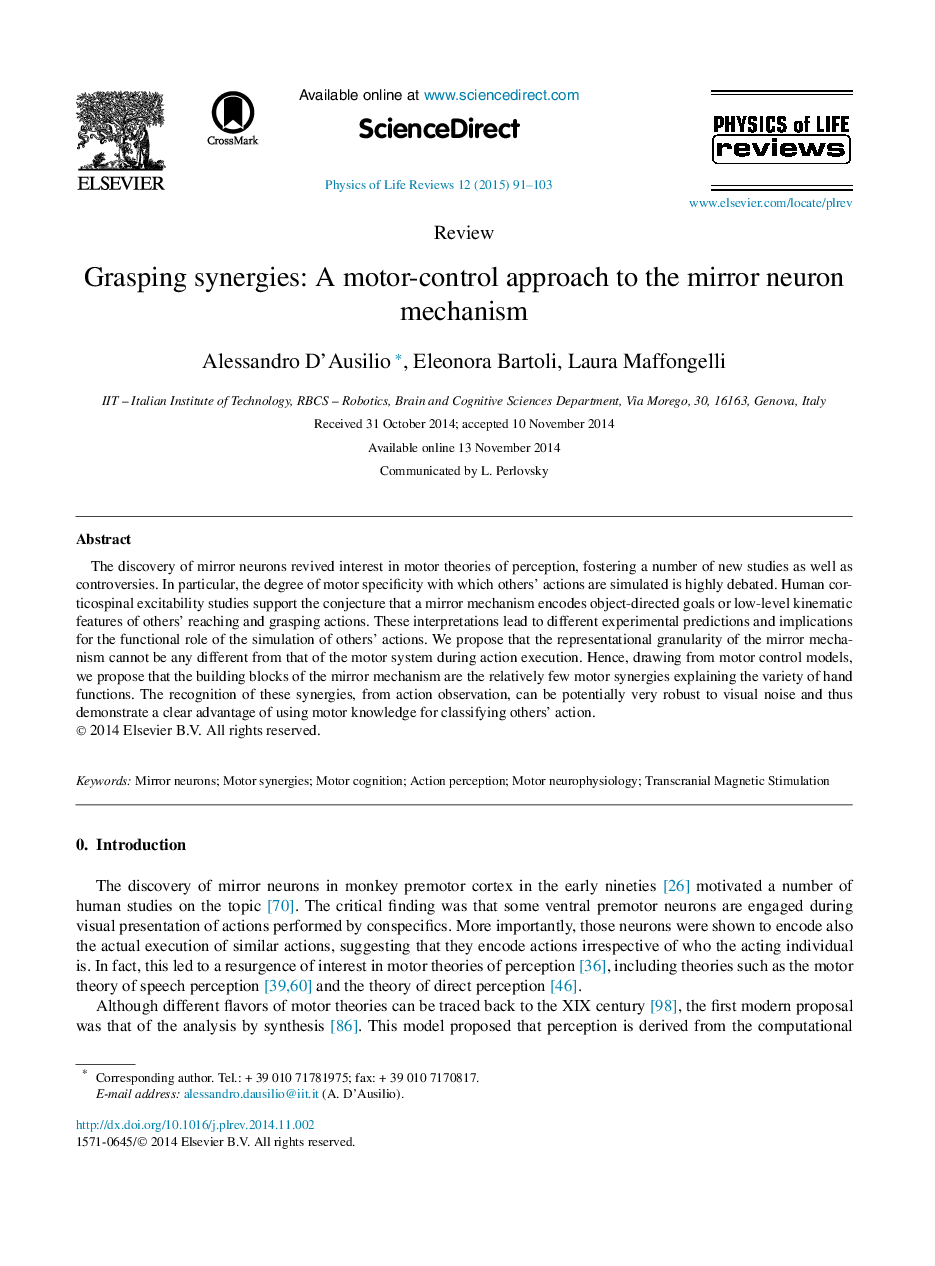| Article ID | Journal | Published Year | Pages | File Type |
|---|---|---|---|---|
| 1872903 | Physics of Life Reviews | 2015 | 13 Pages |
•Mirror neurons fostered a number of new studies as well as controversies.•The debate on the mirror system representational granularity is still inconclusive.•The mirror system granularity cannot be any different from that of the motor system.•The mirror mechanism might be based on the synthesis of relatively few hand synergies.•Synergy recognition can be robust to visual noise and may still grant access to muscle-level features.
The discovery of mirror neurons revived interest in motor theories of perception, fostering a number of new studies as well as controversies. In particular, the degree of motor specificity with which others' actions are simulated is highly debated. Human corticospinal excitability studies support the conjecture that a mirror mechanism encodes object-directed goals or low-level kinematic features of others' reaching and grasping actions. These interpretations lead to different experimental predictions and implications for the functional role of the simulation of others' actions. We propose that the representational granularity of the mirror mechanism cannot be any different from that of the motor system during action execution. Hence, drawing from motor control models, we propose that the building blocks of the mirror mechanism are the relatively few motor synergies explaining the variety of hand functions. The recognition of these synergies, from action observation, can be potentially very robust to visual noise and thus demonstrate a clear advantage of using motor knowledge for classifying others' action.
